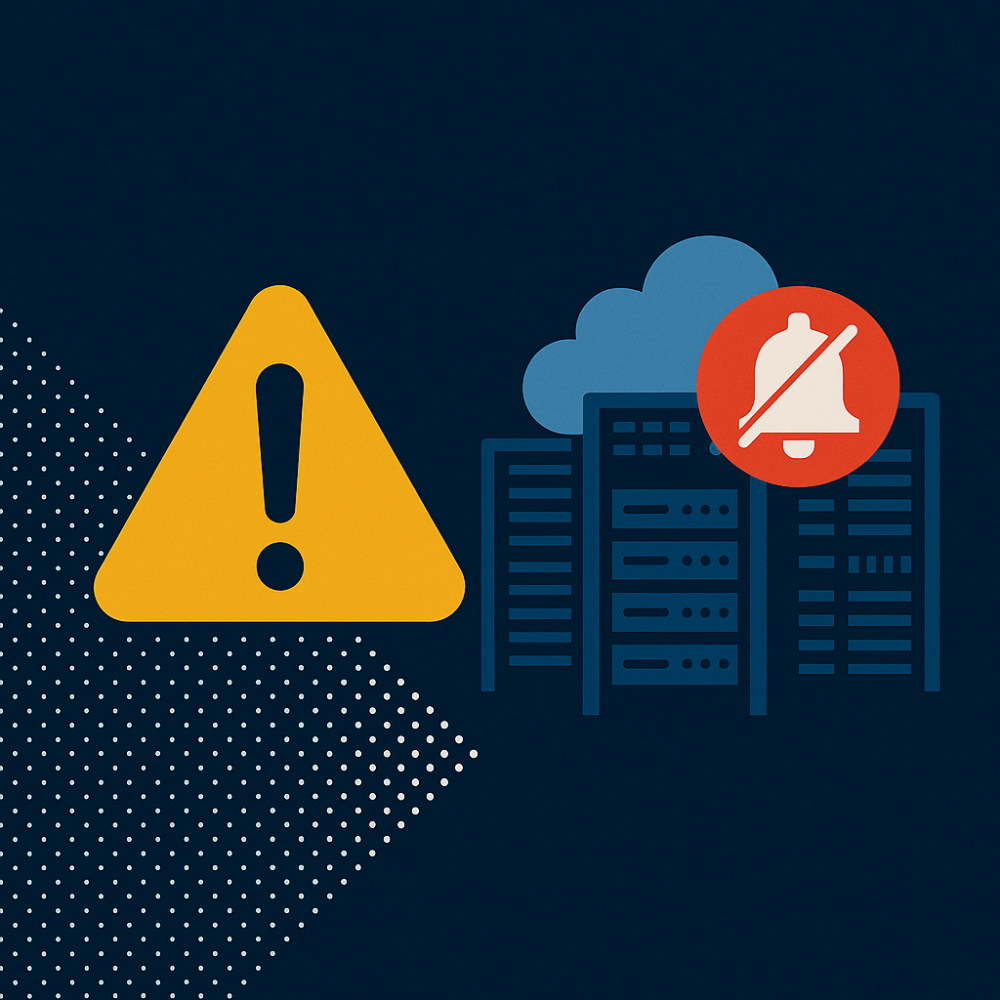In 2028, the CMMS software market is expected to reach $1.7 billion, highlighting a growing level of demand for these solutions in a wide variety of industries and sectors. The right CMMS (Computerized Maintenance Management System) provides numerous benefits for enterprise businesses, reducing issues with downtime, eliminating human error, and managing day-to-day maintenance backlog. However, despite the advantages, the typical CMMS falls short when providing the support that a business requires.
MCIM by Fulcrum Collaborations offers the perfect solution if you are looking for an alternative to the limitations of a typical CMMS. MCIM combines the benefits of CMMS, EAM (Enterprise Asset Management), ERP (Enterprise Resource Planning) and more, empowering directors to transform their business model. MCIM is utilized by 8 out of the top 10 global banks and 3 of the top 4 global colocation providers. Below, we’ll discuss some of the key areas where MCIM surpasses the options provided by the typical CMMS including the following:
- Platform scale, maintainability, and adaptability
- Data standardization
- Continuously clean data
- Equipment reliability benchmarking
Go Beyond CMMS with Platform Scale, Maintainability & Adaptability
A traditional CMMS platform is usually not built on a strong underlying architecture. Instead, developers are required to create all foundational capabilities. While this can lead to a bespoke solution suitable for specific requirements, it also results in a lengthy development cycle and almost no clear path to standardization at scale. As well as forcing businesses to rely on in-house IT services to fill in the gaps, they are also left with a solution that is often far behind the industry average technologically. It also leaves little space for innovation that can provide businesses with the upper hand they need.
In contrast, MCIM is built utilizing Salesforce’s proven architecture and as such delivers all the advantages of that software solution to clients. This includes:
- Advanced AI support
- Native Tableau business intelligence
- Mobile solutions
- World-class security
- The Best APIs
90% of Fortune 500 companies view Salesforce as a trusted platform. With Salesforce at the heart of MCIM, clients can adapt workflow and functionality in a few clicks and a matter of minutes. Not to mention, Salesforce is constantly evolving, providing MCIM users with the latest features and solutions that they require.
A robust library of APIs ensure that data and workflow remain in sync across a variety of platforms including ServiceNow, Remedy and different financial systems.
Data Standardization
Data standardization ensures that everyone from the field to the c-suite use the same language and can easily communicate and effectively share information. This should be a required standard for any CMMS. A typical CMMS provides basic or no data standardization, forcing inefficient manual reviews that are both labor and time intensive and vulnerable to even more inaccuracies. This results in communication and data transfers occurring far more slowly.
MCIM standardizes all data including your already existing information, ensuring that directors have immediate and ongoing insights into all asset management. With standardized data safeguards in place, clients can use MCIM to quickly access important information about assets or to compare ‘like’ assets and set benchmarks.
Continuously Clean Data
Issues with clean data impact the validity of the results of data analysis. Unfortunately, a typical CMMS has limited workflow prompts preventing bad data input and few options for validation testing. As such, key operational data and maintenance history must be exported and cleansed outside of the system which can erode confidence that the analytical insights provided are accurate or useful.
MCIM has been built to ensure that only standardized values are entered to ensure that it can provide immediately actionable insight. MCIM ensures clean inputs by providing users a “nudge” when new data is out of range, helping correct accidental entry of additional digits or erroneous decimal placement. Utilizing QR and barcodes, users access all of an asset’s records and conduct rounds with a quick scan.
For legacy data, MCIM utilizes a unique transformation process, combing through and standardizing years worth of data to gain the most impactful lifecycle insights.
All of this data is fed into on-platform analytical tools including AI engines as well as data visualization systems to help give a complete view of your asset portfolio and empower greater business intelligence.
Equipment Reliability Benchmarking
Equipment reliability benchmarking provides valuable insights for purchasing new equipment and allows businesses to plan for potential failures while managing the costs of facilities management. With MCIM, you can compare portfolio performance to your peers as well as the entire industry.
Most CMMS systems do not have any form of accessible equipment reliability benchmarking. Those that do often have difficulty ensuring their data is clean, up-to-date, and well-connected in a way the CMMS can access.
MCIM provides users with a rich history of model/model-specific failure modes that is native to the system. Quantitative benchmarks include:
- Mean time between failure
- Mean time between repair
- The average age of failure
- And more
Using this data, you can monitor your portfolio for trends and risks outside of normal parameters, automate preventative maintenance, and make more insightful capital planning decisions for maintenance scheduling.
Service Provider SLA/KPI Benchmarking
More often than not, your customers will have Service Level Agreements (SLA) with defined Key Performance Indicators (KPI) that measure the delivery of defined service standards. Generating these reports through a typical maintenance management software can be a manual process that is both error-prone and time-consuming.
Through MCIM it is possible to make direct, clear comparisons between partner KPIs as well as SLA performance. Generating reports through MCIM that include real-time data from across your portfolio allows you to measure the performance of all partners in one powerful system.
AI & Machine Learning
AI and machine learning are quickly becoming core to every business process. However, the typical CMMS still approaches this as a road map feature offered in the future. Very few CMMS systems have a robust AI system that can deliver real actionable, valid, insights out-of-the-box. For many CMMS providers, AI solutions are too costly and require resources they do not have.
MCIM is already ahead of the curve, offering enterprise-grade level AI that can be used with all of your portfolio’s data. This AI solution can be used to explore data trends and empower decision-makers with the right insights, allowing them to focus on variables that matter.
On-screen AI is also accessible through the system for users in the field, with greater insights evolving over time as more data is entered into MCIM.
Adaptable Maintenance Standards & Compliance Reporting
As maintenance technicians know, maintenance doesn’t necessarily follow a monthly schedule. Yet most CMMS’ only provide calendar-based maintenance that locks you into inflexible intervals. This does not include the level of advanced functionality business directors and maintenance teams need including model management, instant compliance reporting and project management standards. The results? Maintenance work isn’t completed on the right schedule and gaps in maintenance requirements widen.
MCIM gives maintenance departments a head start by scheduling maintenance on a wide range of industry maintenance standards including:
- ASHRAE
- IEEE
- NFPA
- ANSI/NETA
- And more
Once you are performing maintenance on a strong, industry-leading cadence, you can then transition to using your maintenance data and work order management to be truly predictive.
And thanks to MCIM’s “single pane of glass” solution, you can monitor maintenance compliance activities, saving time and ensuring processes remain efficient.
Work Template Library
Digital procedures in a typical CMMS are often either nonexistent or require scanned attachments, size and character restrictions, and manual update processes that must be made on asset or local area levels. A lack of bulk load functionality through a typical CMMS will also often result in human errors in transcription.
Through MCIM, the bulk-load capability is available to transfer existing procedures to generate a complete library for all of your procedures including:
- Standard Operating Procedure (SOP)
- Method of Procedure (MOP)
- Critical Environment Work Authorization (CEWA)
- Change Requests (CR)
- And more
With MCIM, you can push work template updates across your entire portfolio or down to individual assets, empowering you to ensure that the best procedures and checklists are widely circulated across your entire portfolio.
Digital CFCRs (Critical Facility Change Requests)
Regardless of tier levels, most CMMS solutions do not have a digital work package for CFCRs. If these are available, there is often a low level of control for version capabilities. This introduces higher levels of risk to the execution and an increased chance of breakdowns and problems with human error.
MCIM provides digital construction & execution of various critical maintenance and operating procedures. There are also seamless updates for field users as well as advanced scripting functionality. This includes:
- Digital pictures
- Switching tags
- Live readings
Capacity Management Reporting
Capacity management reporting provides IT management as well as other service management processes with key data about service capacity, performance, and usage. Through a typical CMMS, this report is presented as unstructured free-form text.
This unstructured format prevents the use of rounds & reading through capacity reporting as well as automated actions including auto-dispatch.
In contrast, through MCIM both digital rounds and readings can be collected instantly and fed into reporting dashboards. Real time data means out-of-spec readings can trigger auto-dispatch work orders, ensuring that there are no delays in arranging the right facility maintenance requirements.
Capital Planning ROM Tools
Rough order of magnitude estimates are a critical element for any business risk management model. They ensure that costs are handled effectively and that any capital repairs or replacements fit into the required budget.
A typical CMMS cannot automatically assess repair or replacement costs for assets. It also lacks historical capital spend or other industry costs data, making it difficult to determine and predict the cost of repairs or replacement. As such, businesses are unable to accurately build multi-year plans for the cost of capital.
Through MCIM, users can access an integrated, advanced digital tool to capture costs associated with asset and facility repairs and replacements. ROM can be calculated instantly at the point of capture. Programming pricing data via integration with Capital Projects and RSMeans also ensures that the predicted costs are accurate. Using this solution, inventory management and capital planning can be completed effectively in rapid time without concerns surrounding human error impacting the results.
Detailed Incident And Uptime Reporting
The most important failure metrics to consider for every project are:
- Mean Time to Repair (MTTR)
- Mean Time Between Failures (MTBF)
- Mean Time to Fix (MTTF)
Due to a lack of integration between incident and asset data, the majority of CMMS solutions provide ineffective failure metrics. Generic failure modes including “human error: as well as “equipment failure” provide little insight into the problem, making the task of taking action to avoid future failures virtually impossible. The lack of enough specific information from a traditional CMMS system provides little to no actionable insights on maintenance tasks for facility teams.
MCIM is different because it delivers detailed levels of information surrounding uptime performance. If there is a failure, facility teams can explore descriptive and actionable “failure tags” that can be utilized across all assets. Now teams can pinpoint a failure and focus on the right actionable step based on the correct insight. The system also provides root cause analysis as well as post-problem review workflow to ensure you can learn the right lesson from your data, helping you limit heavy costs in your business model due to further failures and streamline proactive maintenance programs.
Procure-To-Pay Integration
Procure-to-Pay (P2P) is the process of integrating purchasing and accounts payable systems to provide a more user-friendly, efficient solution. Digitizing your procurement process with P2P can help your company strengthen control among vendors, contracts, buyers, and regulators.
The majority of CMMS implementations have disjointed systems and portals that require complex administration schemes for maintaining purchasing and account payable information. Many of these systems have non-transparent programs and charges, creating “hidden margin” for facility partners and increasing overall costs.
By having your Procure-To-Pay solution fully integrated into MCIM, you make processes easier and more efficient for users, facility partners, vendors and your customers. By keeping licensing costs transparent, you can avoid per-work-order fees or surprise charges. And integrated compliance management for vendors, including forms, Certificate of Insurance (COI), Business Continuity Plan (BCP) and more, helps remove common roadblocks that prevent vendors from utilizing the solution.
White Glove Support For Users & Transitions
Finally, CMMS systems can be complex to set up and use. Often users need support, whether to help get actionable insights out of their data or to explore the different levels of functionality.
Unfortunately, most CMMS solutions do not have a dedicated support team on hand, with representatives unfamiliar with your business and needs, applying cookie cutter approaches to your customized data or local environment. Not only that, but most representatives will not have a background in engineering or the facility management industry, lacking the expertise to provide you expert support with configurations, changes to the software, or how to get the most out of your data. This lack of dedicated, expert support can lead to long response times or ineffective assistance, delaying key business processes, upsetting your customers, and impacting your bottom line.
MCIM’s white glove support provides all users trained experts who are familiar with the specific requirements of each company we serve. Available by phone, email, or live chat, our industry experts support everything from training to problem resolution to providing advanced configurations that help you gain more from your data. This outstanding response is among the best in the business and one large reason MCIM has a 100% retention rate, never losing a customer in more than 10 years in business.
Whether you are at the head of an emerging business or running maintenance operations for a company facility, MCIM provides the benefits you need to access clean data that transforms your business and exceeds the potential provided by a typical CMMS. Fast, secure and easy, MCIM provides the balance between usability and advanced options that allow data to be easily and accurately collected by the team in the field and provide actionable insights to directors and executives in real-time. Start using MCIM as your business’s operating system and discover how it can improve maintenance processes, increase operational efficiency and unlock hidden value in your data through an advanced, constantly evolving, integrated hub.
Experience the power of MCIM by Fulcrum Collaborations for yourself with a free demo. Talk to an expert to see how you can bring the power of DCIM, CMMS, ITSM, EAM, and more all into one single source of truth.



